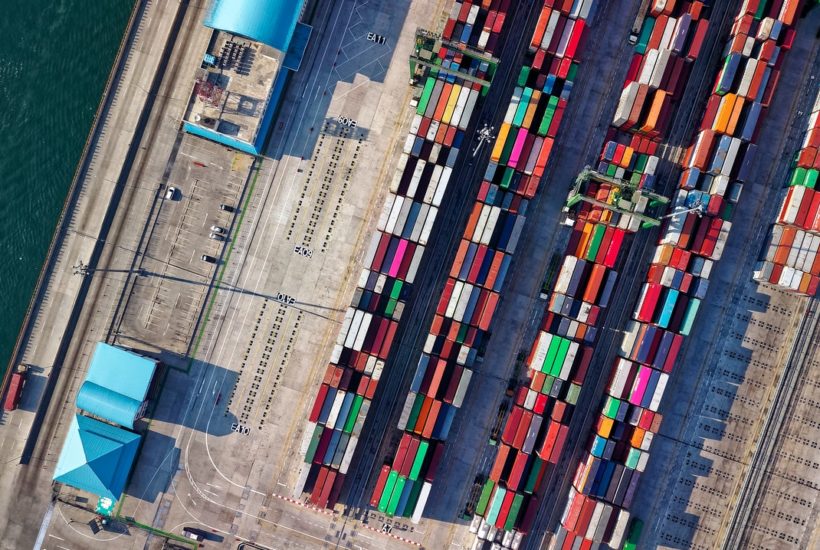Business
XRApplied helps David take on Goliath: Walmart-style supply chains for SMEs
Retailing giants like Walmart and Amazon have an unfair advantage over their smaller competitors—their supply chains. With centralized databases and full integration of data from POS to manufacturing and distribution, they are able to benefit from efficiencies that others can only dream of. Now, XRApplied believes that Extended Reality can level the supply chain playing field. But how?

The revolutionary retailing and distribution models implemented by companies like Amazon and Walmart have created incredible efficiencies that were—not that long ago—nothing but a pipedream. While this has been a boon for consumers, it has been detrimental to many smaller competitors who lack the requisite insight into their supply chains to even begin to compete. But times do change, and technology disrupts. This is why companies like XRApplied are working to integrate Extended Reality (XR) technology into the supply chain, giving SMEs access to some of the same tools that the aforementioned retail giants have and leveling the playing field in the process.
And while this all sounds far-fetched (what does XR have to do with supply chain management!?), it’s far more real than you may imagine. The key, however, is not through direct application of XR. Rather, it is the data that well-thought-out applications can feed directly back up the chain—to manufacturers and distributors alike—that will be the real game-changer.
Walmart’s world-class supply chain serves as an early-stage prototype for XRApplied’s vision
Anyone with a passing interest in supply chains has undoubtedly heard about Walmart’s. It is often cited as one of the most advanced and efficient supply chains ever created. the retail giant’s innovations through technology have given it—and its suppliers—unprecedented vision into every link in the supply chain. This has enabled the retailer to tie each single customer transaction right back up to the distribution, warehousing, and manufacturing stages. As a result, demand fluctuations are no longer unexpected surprises that only occur once order information trickles its way through the supplier and distribution network.
And while this is all well and good, for most businesses Walmart’s supply chain exists more as an interesting theoretical case study than as a pragmatic system. Most manufacturers, distributors and retailers quite simply don’t have the requisite scale to implement the systems that Walmart have. Even with the assumption that there is sufficient cooperative goodwill between all and sundry to work towards tighter integration, there would still exist all the problems that come with vendor lock-in and legacy systems. Will a retailer be willing to bear the cost of integrating its POS systems with whatever standard is implemented by their multiple suppliers who, inevitably, will each be using their own incompatible software systems?
And the same applies in the opposite direction: are manufacturers, suppliers, and distributors willing to bear the cost of integrating POS data from a multiplicity of sources? No, not really. It’s just too messy of a problem to solve without the power to impose centralized databases and standard APIs throughout the entire network. It is something that only the biggest and most powerful retailers can do; the sheer size and buying power of Walmart is enough to impose an ‘integrate or die’ mandate on its partners.
How does XR solve the problem?
To illustrate how XR can be used to solve some of the biggest difficulties that come with demand forecasting, let’s imagine that we’re a flooring manufacturer. In the current model of retailing, our only insight into what customers are purchasing comes in the form of orders that work their way back up to us from retailers. If there’s a sudden demand for, let’s say, wooden floorboards, we only find out after the fact when we suddenly receive orders that outstrip our current supply capacity. Now, we’re potentially at the mercy of our timber supplier who could also find themselves shocked by the sudden spike in timber orders, holding up further our already delayed order fulfillment time.
This is where XRApplied’s technology kicks in. Specifically, in this case, Augmented Reality (AR).
Traditionally, flooring is brought in showrooms. Usually, we visit with a color scheme in mind, browse around to look at the options, um and ah a little, and then maybe take some samples away to think about it more. Eventually, as design ideas materialize, we might settle on a shortlist of textures and colors. Then we return to the showroom and make the final choice at the point of sale.
In an AR world, the showroom would be less relevant as we would be able to experiment with flooring choices in our own homes, seeing exactly what they look like as real-time AR overlays. How this helps supply chains is by collecting data points, such as how long the user spends playing around with a certain flooring product and the estimated square footage of the rooms they experiment with each floor type.
In the hands of a flooring manufacturer, this data would enable them to adjust production forecasts and goals, smooth off orders with its suppliers, and push inventory into the distribution network ahead of the demand side pull. While this data is somewhat less accurate than direct sales data, it is also somewhat more powerful; it’s a leading indicator and, as an aggregate, the data will be close to accurate.
While XR may sound expensive, XRApplied doesn’t believe it has to be
All of this may, again, sound like a distant pipedream to many businesses. As an emerging technology, XR technology can be prohibitively expensive to develop, often requiring specialized developers and intellectual property to get a project off the ground.
But XRApplied wants to solve this, and are opening their doors to SMEs around the world. They want to make XR tech accessible and, to do this, they are developing highly streamlined processes and assets for getting new XR applications off the ground.
This comes in the form of multiple IP assets that can be recycled and reassembled into any number of new applications, as though they were Lego bricks. By coupling this with the refined processes that give them the insight to see exactly how all the pieces fit together, the possibilities for SME XR applications are only going to increase as the costs to SMEs decreases.
__
(Featured image by Tom Fisk via Pexels)
DISCLAIMER: This article was written by a third party contributor and does not reflect the opinion of Born2Invest, its management, staff or its associates. Please review our disclaimer for more information.
This article may include forward-looking statements. These forward-looking statements generally are identified by the words “believe,” “project,” “estimate,” “become,” “plan,” “will,” and similar expressions. These forward-looking statements involve known and unknown risks as well as uncertainties, including those discussed in the following cautionary statements and elsewhere in this article and on this site. Although the Company may believe that its expectations are based on reasonable assumptions, the actual results that the Company may achieve may differ materially from any forward-looking statements, which reflect the opinions of the management of the Company only as of the date hereof. Additionally, please make sure to read these important disclosures.

-

 Crypto2 days ago
Crypto2 days agoBitcoin in 2025: Mainstream Momentum, Price Weakness, and a Pivotal Year Ahead
-

 Fintech2 weeks ago
Fintech2 weeks agoN26 Hires UBS Executive to Lead Turnaround Amid Regulatory Pressure
-

 Biotech1 week ago
Biotech1 week agoCAR-T Therapies: From Breakthrough Cancer Treatment to Faster, Safer, and More Accessible Immunotherapy
-

 Fintech2 days ago
Fintech2 days agoPakistan’s Digital Finance Paradox: Growth, Fraud, and the Fight for Trust























